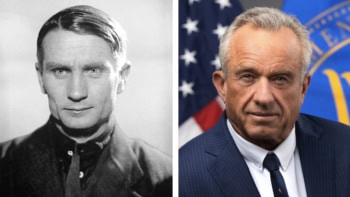By Margaret Harris
Here’s a little game for you to play the next time you read a profile of a woman in science. As you read the article, count the number of times it mentions:
The fact that she is a woman
Her husband’s job
Her childcare arrangements
How she acts as a “nurturing figure” towards junior scientists
How she was taken aback by the competitiveness of her field
That she’s a “role model” for other women
How she’s the “first woman to…”
If the article’s total score is anything other than zero, then it fails the Finkbeiner test.
The name comes from a blog post by the science journalist Ann Finkbeiner in which she discusses the unequal ways that men and women in science are portrayed in the media. At the end of the post, she announces that the next time she’s asked to write an article about a prominent female astronomer, she’s not going to mention any of the things on the list above. Instead, she declares, “I’m going to write about her as if she’s just an astronomer.”
When I mentioned Finkbeiner’s blog post to Physics World’s editor Matin Durrani, he winced. Back in May 2001, it seems, we failed the Finkbeiner test in a pretty spectacular way by publishing a profile of Cherry Murray (then a vice-president at Bell Labs) that devoted fully one-third of a page to explaining “how she manages to combine a high-flying career and motherhood”. It gets worse: by chance, Murray’s profile appeared right next to a similar type of article on a male scientist, the astronomer David Southwood. The difference between the two profiles is, to put it mildly, stark. As one reader, Liz Parvin, pointed out in a letter to the editor the following month, the profile of Southwood did not even mention whether or not he has children – much less explain “how he manages to combine a high-flying career and fatherhood!”.
Parvin, who is now a senior lecturer at the Open University, concluded her letter by suggesting that this sort of attitude is as unfair to men as it is to women. The atomic physicist (and father-of-two) Chad Orzel seems to agree. Writing about the Finkbeiner test on his blog this week, he argues that rather than banishing childcare questions from profiles of female scientists, it would be much better to add them to profiles of men. “It’s not the content of the questions that’s a problem,” he explains. “The problem is that they’re asked unequally, and even more importantly the underlying assumptions explaining why they’re asked unequally” – which include the assumption that male scientists like him won’t, or shouldn’t, have to worry about childcare.
I definitely see where Orzel is coming from, but a couple of really egregious profiles I’ve read post-Finkbeiner have got me thinking that a two-pronged approach may be necessary. While I agree that journalists should start asking male scientists how they manage to “have it all”, I also think we should stop asking that same question of women, at least for a little while. Because unfortunately, Physics World isn’t the only publication with some well-meaning “Finkbeiner fails” in its archive, and it’s going to take a lot of “pretending that she’s just an astronomer” to balance all of them out.



